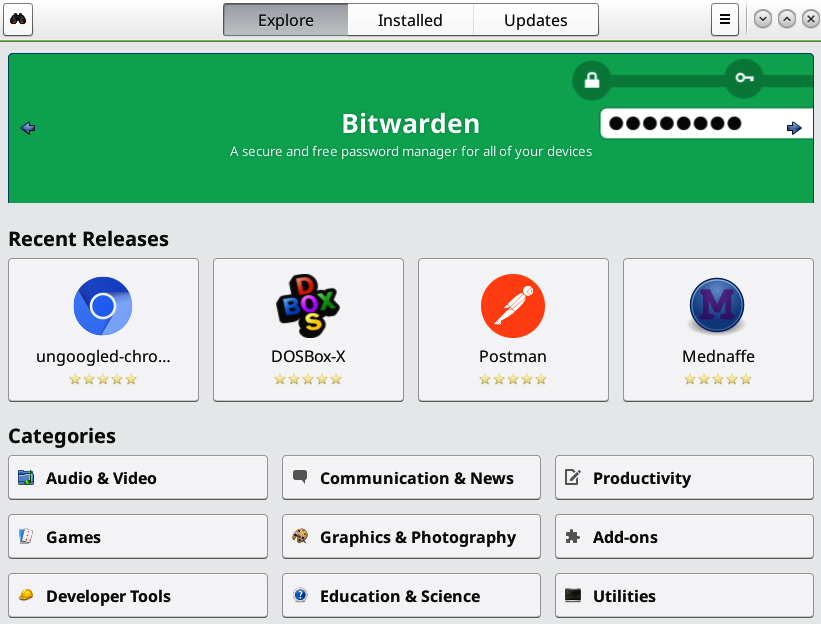Appendix. Software Management Cheatsheets
Software on Linux comes in packages. These packages contain all the files that belong to a particular application, such as a web browser, word processor, and games. Linux systems use shared libraries, which are shared by multiple applications. Most packages on Linux are not self-contained, but depend on shared files.
The graphical software manager on most Linux distributions is GNOME-Software, also called Software (Figure A-1). Software is well organized, with categories and good search capabilities.

Figure A-1. GNOME-Software
Package Management Commands
Every Linux distribution uses three types of software management commands:
-
A package manager, which manages only single packages. Fedora and openSUSE use the rpm package manager, Ubuntu uses dpkg.
-
A dependency-resolving package manager. Fedora uses dnf, openSUSE uses zypper, and Ubuntu has apt. Dependency-resolving package managers ensure that any dependencies for a particular package are automatically resolved. For example, the gedit text editor has a long list of dependencies, as this example for apt illustrates:
$ apt depends gedit gedit Depends: gedit-common (<< 3.37) Depends: gedit-common (>= 3.36) Depends: gir1.2-glib-2.0 Depends: gir1.2-gtk-3.0 (>= 3.21.3) Depends: gir1.2-gtksource-4 Depends: gir1.2-pango-1.0 Depends: gir1.2-peas-1.0 Depends: gsettings-desktop-schemas Depends: ...
Get Linux Cookbook, 2nd Edition now with the O’Reilly learning platform.
O’Reilly members experience books, live events, courses curated by job role, and more from O’Reilly and nearly 200 top publishers.

